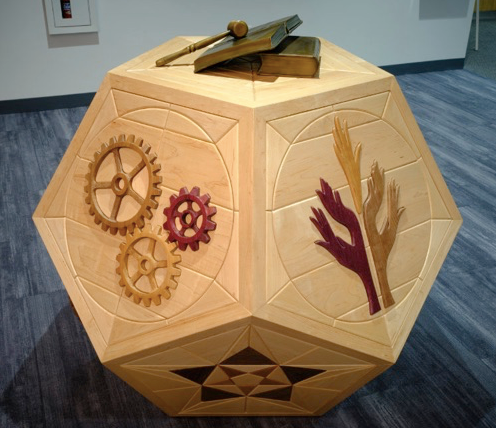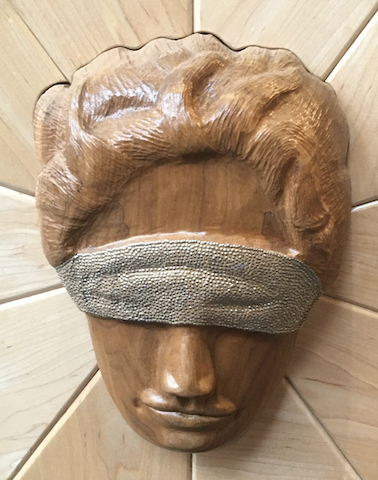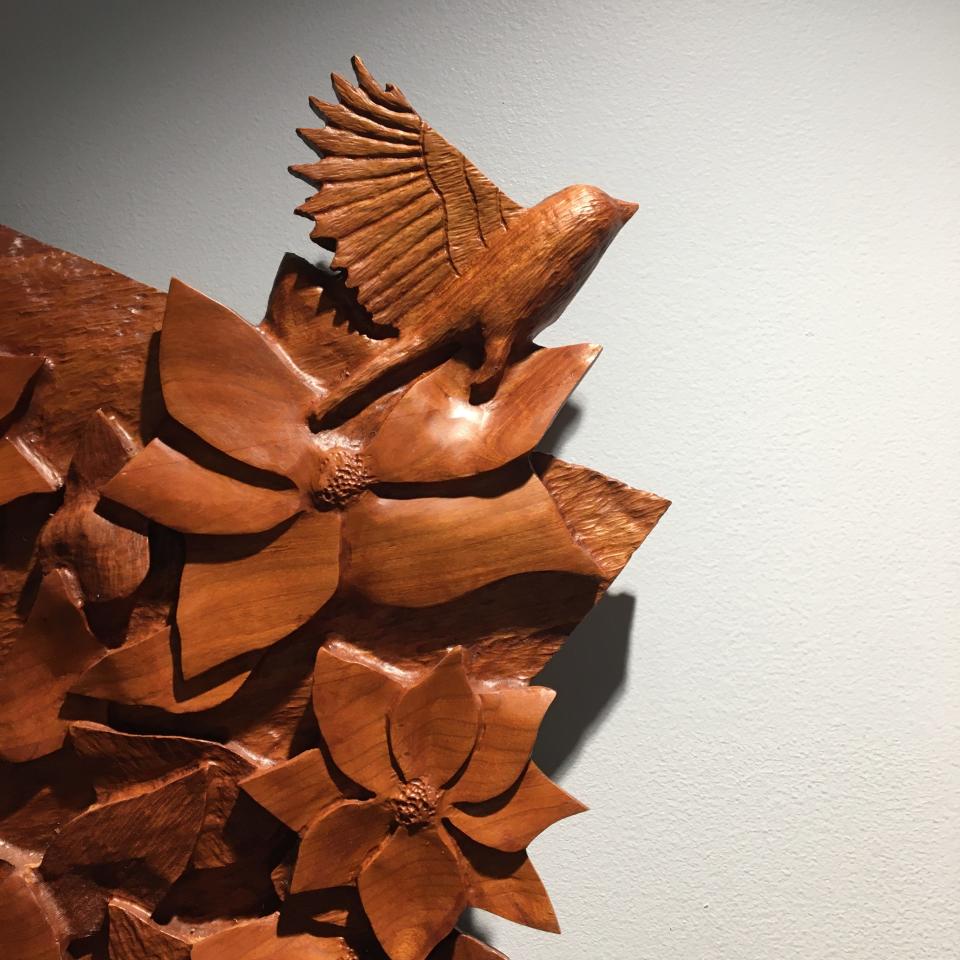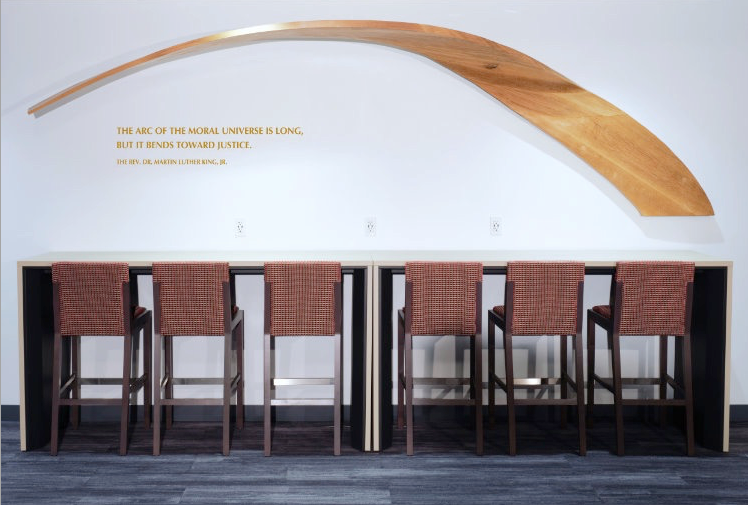Art Beat: Atrium at UMass Law combines design, civic engagement
Up until very recently, there were three schools in the University of Massachusetts Dartmouth system that were not located on the sprawling Old Westport Road campus, known for its Brutalist architecture and its ring road.
One was the satellite campus of the College of the Visual and Performing Arts (CVPA) that was housed in the Star Store building in downtown New Bedford before it was quickly and unceremoniously ordered to be vacated by the forces that be. But that is a tale for another time.
In the far South End of New Bedford, near Fort Taber, is the School for Marine Science and Technology (SMAST).
And much closer to the main campus, near an array of medical facilities, the county jail, and a linguiça factory, set back from busy Faunce Corner Road is the University of Massachusetts School of Law, or simply UMass Law. It is the only public law school in the Commonwealth.
With a bit of serendipity, coupled with enthusiasm and determination on the part of any number of individuals, the atrium of that school has been transformed into an outstanding public space.
The precursor to UMass Law was the Southern New England School of Law, a non-profit private school that operated from 1981-2010. When it closed, it donated its assets to the University of Massachusetts.
In 2016, UMass Law was accredited by the American Bar Association, thanks to the efforts of many, including former Chancellor Jean MacCormack and New Bedford lawyer MarDee Xifaris, described as “the first woman of South Coast politics.”
MacCormack wanted to make a gift and it was suggested that her contribution could be used to update the lobby, the public face of the school. Renovations kicked in, new furniture was installed. But there was no soul. She described it as “a space but not a place.” Former Dean Eric Mitnick described it as sterile and utilitarian.
Familiar with the work of local sculptor John Magnan, MacCormack reached out to him and a conversation began with regard to how the space could become a place. With invaluable input from students, Magnan and his long time creative partner and collaborator Annie Jonas got to work. The entire process took about a year and the end result is exhilarating, moving and thought-provoking.

While Magnan designed and constructed the sculptures, Jonas ensured that the room maintained a comprehensive coherence.

As one enters the reimagined atrium, a visitor comes face to face with a large maple dodecahedron called “Plato.” On each surface are images inspired but not dictated by the students. They enlighten without becoming didactic.
One panel features a series of turning gears, rendered in walnut, cherry and purpleheart, which acknowledges that the young law students are “always working.” Another utilizes the same three wood varieties to depict hands reaching upward, either seeking aid or offering it.

A tesseract symbolizes interdependence. Low to the ground is an image of Themis, the Greek goddess of justice, blindfolded in order to keep impartiality, and Magnan has blindfolded her by tapping in hundreds of little silver pins.

Envisioned by Jonas, one wall was restructured to maximize spatial elements and painted a shade of black that doesn’t seem to reflect light but rather absorb it, if such a thing were possible. Mounted to the wall are brass letters spelling out the school motto: pursue justice.

On a far wall is mounted a remarkable low-profile solid cherry assemblage of flora, like leaves in a deep wood. But if one looks close enough, one might seed a bird fleeing the tangle of the bush. The work is titled “The Joy of Access” and signifies that the ability to access so many things — representation, choice, opportunity, self-determination, education — is joy manifested.
On another wall, a large curving segment of laminated oak floats off the surface and the lighting is positioned in such a way as to cast a shadow pointing to the entrance of a “moot courtroom,” where students work with retired judges to master the formalities of courtroom culture and procedure.

Beneath the great arc, the Reverend Martin Luther King, Jr. is quoted: “The arc of the moral universe is long, but it bends toward justice.”
Jonas spearheaded the research that led to the selection of three paintings (all done by UMD MFA grads) that are perfectly fitting within the space, aesthetically and spiritually. The paintings by Shabnam Jannesari, Taylor Maroney and Robert Najlis add a much needed color infusion to balance things out.
The permanent installation at UMass Law atrium is a rare feat. It is a virtually flawless marriage of art, design and civic engagement.
The Atrium at UMass Law, 333 Faunce Corner Rd., N. Dartmouth, is open to the public year round according to library hours.
This article originally appeared on The Herald News: Art Beat visits the Atrium at UMass Law in North Dartmouth

